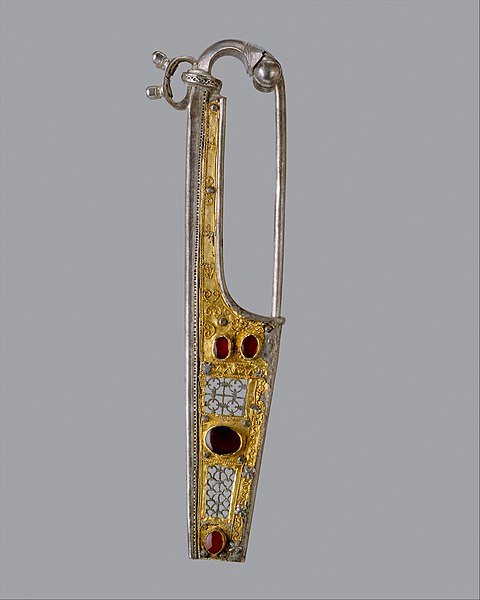The Celtic brooch, more properly called the penannular brooch, and its closely related type, the pseudo-penannular brooch, are types of brooch clothes fasteners, often rather large; penannular means formed as an incomplete ring. They are especially associated with the beginning of the Early Medieval period in Ireland and Britain, although they are found in other times and places—for example, forming part of traditional female dress in areas in modern North Africa.
The pseudo-penannular Tara Brooch, the most ornate of all, also decorated on the back (see below). Irish, early 8th century.
Viking period brooch in silver from the Penrith Hoard
The Rogart Brooch, National Museums of Scotland, FC2. Pictish penannular brooch, 8th century. Silver with gilding and glass. Classified as Fowler H3 type.
Bronze zoomorphic penannular brooch, Co. Antrim, 6th century AD. The Hunt Museum (Limerick, Ireland).
A brooch is a decorative jewellery item designed to be attached to garments, often to fasten them together. It is usually made of metal, often silver or gold or some other material. Brooches are frequently decorated with enamel or with gemstones and may be solely for ornament or serve a practical function as a clothes fastener. The earliest known brooches are from the Bronze Age. As fashions in brooches changed rather quickly, they are important chronological indicators. In archaeology, ancient European brooches are usually referred to by the Latin term fibula.
Wing Brooch, 2nd century AD, Metropolitan Museum of Art
Bronze Age brooch
Bow brooch, Iron Age
Trumpet brooch, Iron Age








